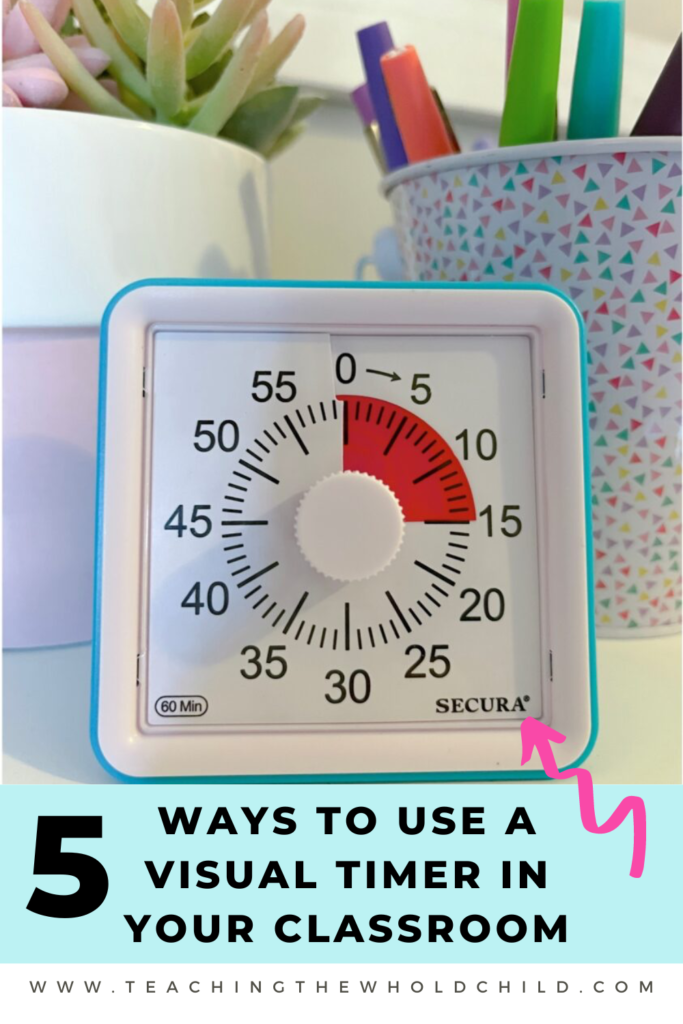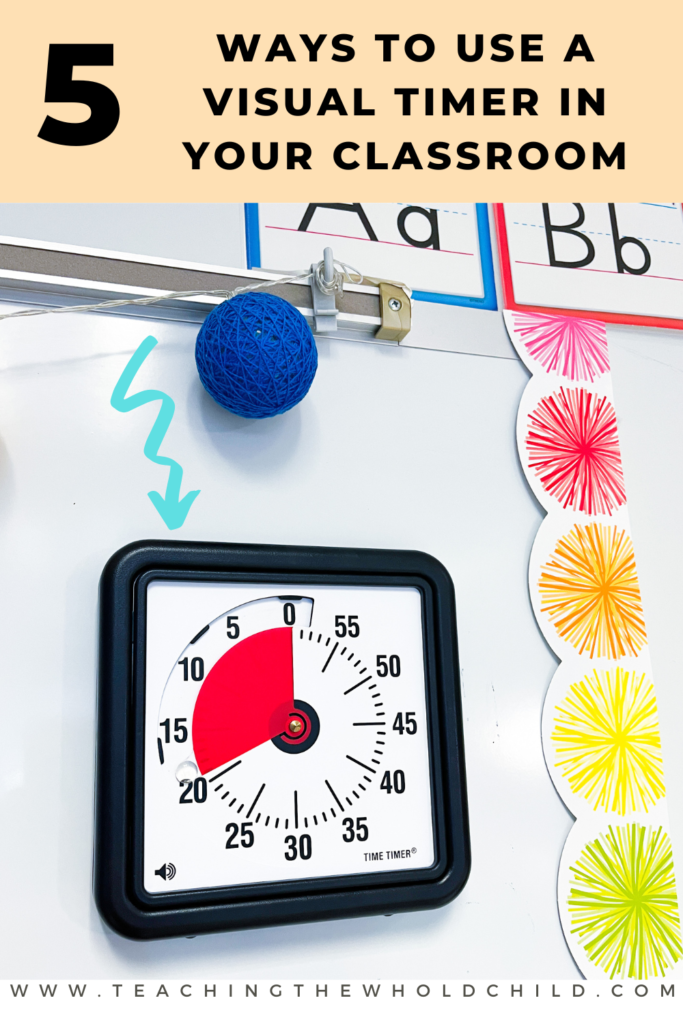
Visual timers, like the one shown here, are great to help manage time at home or in the classroom with young children. Here are five different ways in which these will help make life easier and help young children be able to manage time more easily:
Clean-up Countdown
Clean-up time can be challenging for young children, it is very hard to have to put away the toys that they have been playing with, especially if they do not anticipate when that is going to happen. Help make this time less challenging by setting the timer so that they can see how long they have left to play and are typically more prepared to clean up. Giving a five-minute warning is also beneficial because the children look at the timer and take note of how long they have left.
Transitions
Much like with clean-up time, using the timer for any transitions in the classroom or at home is very beneficial and can relieve the stress that young children can have by helping them feel like they are more aware of what is to come. Using a visual schedule along with the timer can also help children feel more in control of what they are doing throughout the day.
Centers Timer
Using a timer during center time in the classroom can assist with helping students to understand how long they will be in each center and gives them an audible cue in which to let them know when to move to the next center.
Prevent Early Finishers
When given an activity, there are always some children who tend to rush through it. You can prevent this by encouraging them to work as best as they can until the timer goes off. When the timer goes off the students can either clean up or keep working on their activity. Make sure to set the timer for an appropriate amount of time according to the age and ability of the child. For example, for a three-year-old child working on a coloring page, three to five minutes should be the maximum amount of time set.
Cool Down and/or Nap Time Helper
If you have a child that can benefit from a few minutes of silence or cool down time, the timer can help them visually see how long they should cool down. Similarly, a visual timer helps those children that have not fallen asleep see how long they have left before they can get up.
*In all scenarios make sure that the amount of time that is set corresponds with appropriate times associated with each age group. Younger children cannot sit or wait as long as older students can. The benefits of the timer can be outweighed if a child is expected to wait beyond what is reasonable for their age.

Happy Teaching!










